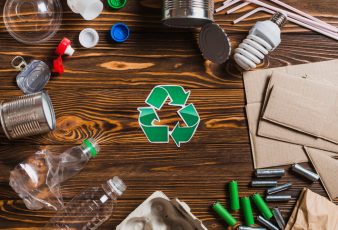The world of agriculture has seen tremendous innovation and change over the past century. One recent shift that is spreading across fields and boosting yields is the rise of agricultural plastic sheeting. Where crops once solely relied on the nourishing qualities of soil and rain, many now also leverage the power of polyethylene, polypropylene, and more to maximize their potential.
“The results depicted that plastic film mulching can significantly boost crop yield by 39.5% along with water use efficiency by 37.9%. On the other hand, there is an increase of evapotranspiration categorized under plastic film mulching was insignificant,” notes agricultural researcher Liangang Xiao. Statistics like this showcase why plastic is increasingly becoming a farmer’s best friend.
So how exactly is this versatile material able to deliver such benefits? By creating optimal microclimates, suppressing weeds, retaining moisture, and protecting from pests. The applications spanning greenhouses, low tunnels, mulching, and silage storage allow farmers to control variables that previously seemed determined by Mother Nature alone.
In this article, we’ll explore popular plastic sheeting types leveraged in agriculture and key techniques for installation and upkeep. The future fields and orchards wrapped in plastic promise higher yields, greater efficiency, and boundless innovation to come. Let’s dig in to see how this unlikely hero is maximizing outputs while also transforming age-old farming practices.
Key Plastic Sheeting Types Cultivating Better Yields
When it comes to agricultural plastic sheeting, farmers have a range of options to suit their specific climate, crop, and application needs. Some of the most popular plastic sheeting types offering durable weed prevention, adjustable water retention, and heat control include:
1. Polyethylene (PE)
Polyethylene plastic sheeting is the non-toxic workhorse material of the agricultural sector. This highly affordable and versatile option comes in low-density (LDPE) and high-density (HDPE) varieties.
LDPE offers easy handling and installation but less longevity, while HDPE provides increased thickness and durability to uphold through many seasons. Polyethylene films are often used for mulching in crop rows, low tunnel covers, and silage storage bags. Their water retention properties also make polyethylene ideal for drip irrigation systems.
2. Polyvinyl Chloride (PVC)
With high tensile strength yet flexibility, polyvinyl chloride plastic films can withstand years of exposure to harsh weather, chemical substances, and soil abrasion. PVC sheets offer reliable performance as walkway tunnels over crops, protective covers over fruit trees and vines, and translucent greenhouse enclosures. This material conducts heat well, helping regulate temperature for healthy growth. Resistance to grease and chemicals also makes PVC a pragmatic choice for agricultural vehicle sheeting and animal housing.
3. Polypropylene (PP)
Heralded for its resistance to chemical corrosion, polypropylene is making inroads through modern farming. Its high-temperature endurance allows it to insulate seeds and soils, stimulate germination, and accelerate plant development.
The ability for moisture to pass through polypropylene enables excellent water permeability for certain irrigation techniques. Polypropylene plastic ground cover also limits evaporation, controls weeds, and prevents topsoil erosion, even on sloped land.
4. Polycarbonate
With glass-like clarity but a far more flexible, durable composition, polycarbonate plastic sheeting builds on polypropylene’s temperature control. Having excellent impact resistance compared to glass alternatives, polycarbonate plastic films stand up to hail, falling tree branches, and other harsh impacts a greenhouse may face.
At just a fraction of the weight of glass, polycarbonate panels also ease construction. Advanced polycarbonate plastic sheeting types even selectively control light transmission, diffusing the optimal wavelengths to nurture growth underneath.
There are clear advantages to each plastic film type. By selecting the right match for climate vulnerabilities, crop types, and growth cycles, agriculturalists can leverage these materials for both treatment and prevention across seasons.
The Bright Road Ahead For Agricultural Plastic Films
From increasing drought resilience to accelerating growth cycles, agricultural plastic sheeting has already demonstrated immense value over the last few decades. Yet the innovation in this sphere is far from over.
As technology unlocks stronger and more selectively permeable materials, crops will benefit from amplification of the heat retention and moisture control properties that current plastic sheeting provides. UV-blocking and flame-retardant properties also help safeguard yields moving forward.
Specialized nutrient-release plastic sheeting types are also gaining ground. These mulches feature slow-release tanked fertilizers to nourish crops directly through the film over longer periods. Automated opening films that stimulate or arrest germination via temperature and moisture cues also give farmers more control over variable climates.
And perhaps most exciting is the potential for biodegradable plastic mulching films derived from plant starch instead of polyethylene polymers. These eco-friendly films offer all the agricultural advantages during key growth periods, then they biodegrade back into the soil. This helps address plastic pollution concerns without sacrificing the beneficial effects plastic films afford.
Between nurturing plants through harsh conditions and aligning practices with environmental values, agricultural plastic films are poised to be an integral part of responsible and productive farming for years to come. With thoughtful innovation balancing the preservation of crop health and our shared planet, plastic sheeting’s advantages for both people and nature look boundless.
The Bottom Line
Using plastic mulch for agricultural processes seeks a unique process of application. When installed correctly, it ensures proper placement of the plastic film and, consequently, maximizes the yield. In some fields, it might need the company of a few other equipment, while it may not in others. Hence, the agricultural world has witnessed many changes since its dawn.
With this, I conclude my words here. If you are indulged in the agricultural domain, this might be the right time to install a plastic mulch and take your yield to newer heights. Keep following us for more informative content. Also, don’t forget to share your thoughts on this in the comments below. Thank you!
Read Also:





























